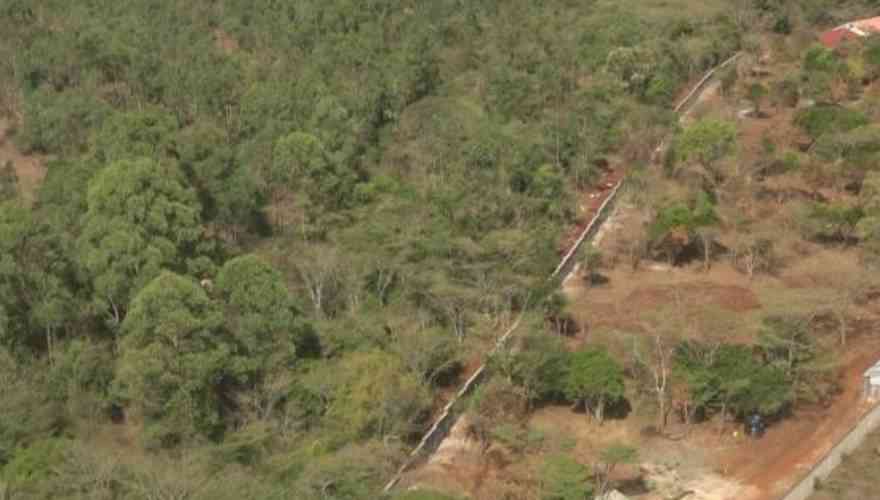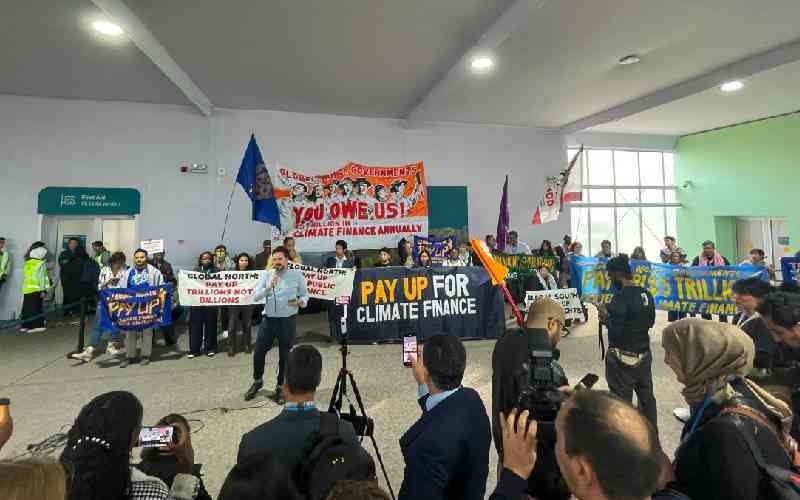
A wildlife ranger examines a dead giraffe that was trapped by a fence in the Mailwa area in Kajiado Central. [Peterson Githaiga, Standard]
As human activities continue to encroach on animal habitat in some parts of Kajiado County, a crisis is quietly unfolding, threatening one of Africa's most iconic animals, the Maasai Giraffe.
These animals are increasingly at risk of being wiped out and without urgent action, the county may soon lose the majestic creatures.
The area has been transformed by the rapid rise of private ranches with the landowners fencing off what used to be open landscapes.
The fences are now blocking crucial migratory routes, especially along the Kajiado-Namanga Highway.
These routes are vital for giraffes to move freely in search of food, water, and safety. Tragically, the fences have now become death traps.
According to Mr John Kisimir, Co-Founder of RAMAT Wildlife Society, more than 20 giraffes have died after being trapped by these barriers in the last one year.
“If the wildlife corridors in Central Kajiado are lost, there will be no wildlife moving between Amboseli National Park and Maasai Mara Game Reserve, immediate action is needed'' said Kismir.
In an interview with The Standard on Wednesday, Kismir argues that private land owners should be encouraged and sensitised to create wildlife corridors, open spaces where giraffes and other animals can move freely between their habitats.
''Currently, almost 30 giraffes have been trapped inside fences in Mailua Location, cut off from their herds, and unable to reach better pastures, they are isolated from their social groups, these giraffes face increased risks of starvation, injury, and sometimes go months without access to water'' said Kismir.
He says the situation has become so severe that rangers rescue giraffes caught in fences nearly every week. Most giraffes do not survive when they fall during such incidents.
''Conservation organizations have largely ignored Central Kajiado, focusing instead on well-known areas like Amboseli, Tsavo, and Maasai Mara'' he added.
He said the key way of solving this crisis is engaging the private landowners in a productive dialogue.
''These incentives could include compensation for lost grazing land, investment in Eco-tourism ventures that benefit landowners, or grants promoting sustainable land use that balances livestock farming and wildlife conservation'' Added Kismir.He says with the support from the RAMAT Wildlife Society, some communities have set up conservancies to protect both their land and the animals that live there, However, their efforts face significant challenges, particularly being lack of adequate support and technical resources, especially in areas like wildlife science and community engagement.“The Maasai giraffe is not just another animal, it represents our wild heritage, losing it due to man-made barriers would be a tragedy. We must act now to ensure the Maasai giraffe continues to roam these plains for generations to come,” said Kismir.
 The Standard Group Plc is a multi-media organization with investments in media platforms spanning newspaper print
operations, television, radio broadcasting, digital and online services. The Standard Group is recognized as a
leading multi-media house in Kenya with a key influence in matters of national and international interest.
The Standard Group Plc is a multi-media organization with investments in media platforms spanning newspaper print
operations, television, radio broadcasting, digital and online services. The Standard Group is recognized as a
leading multi-media house in Kenya with a key influence in matters of national and international interest.











